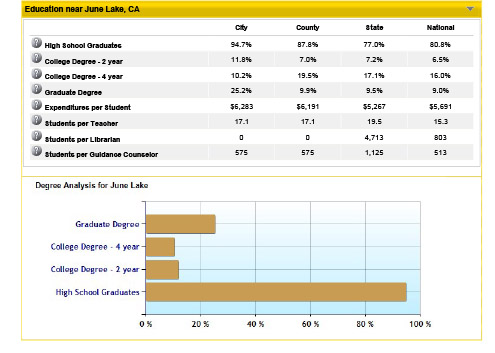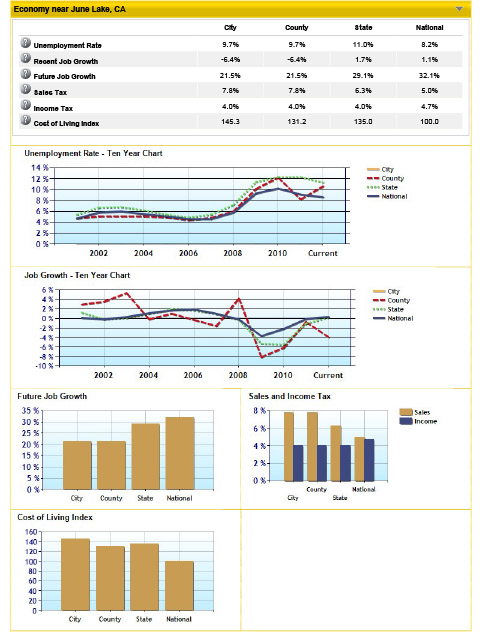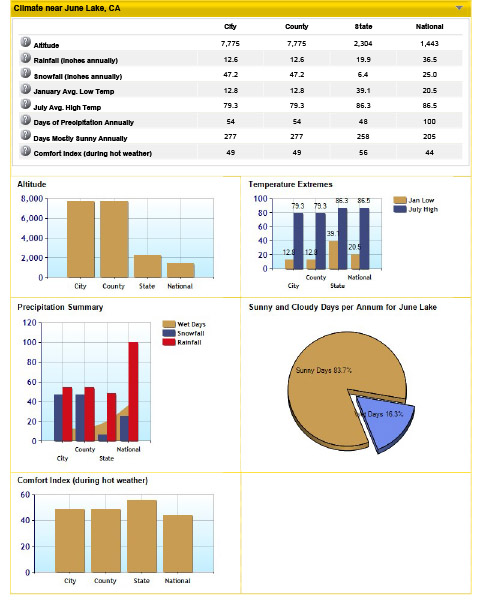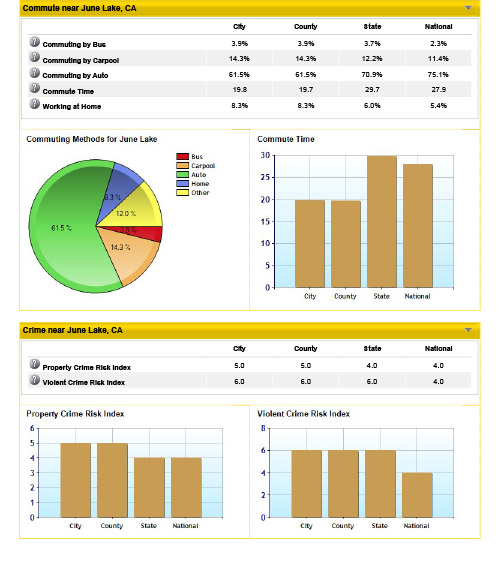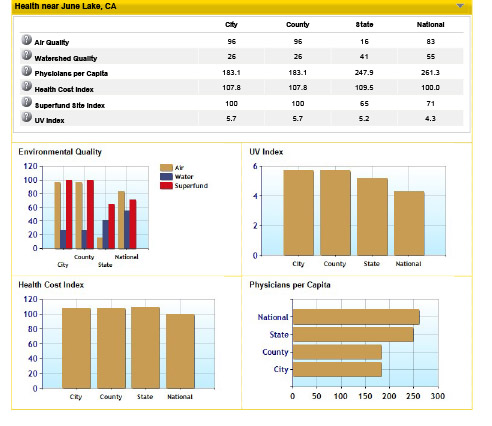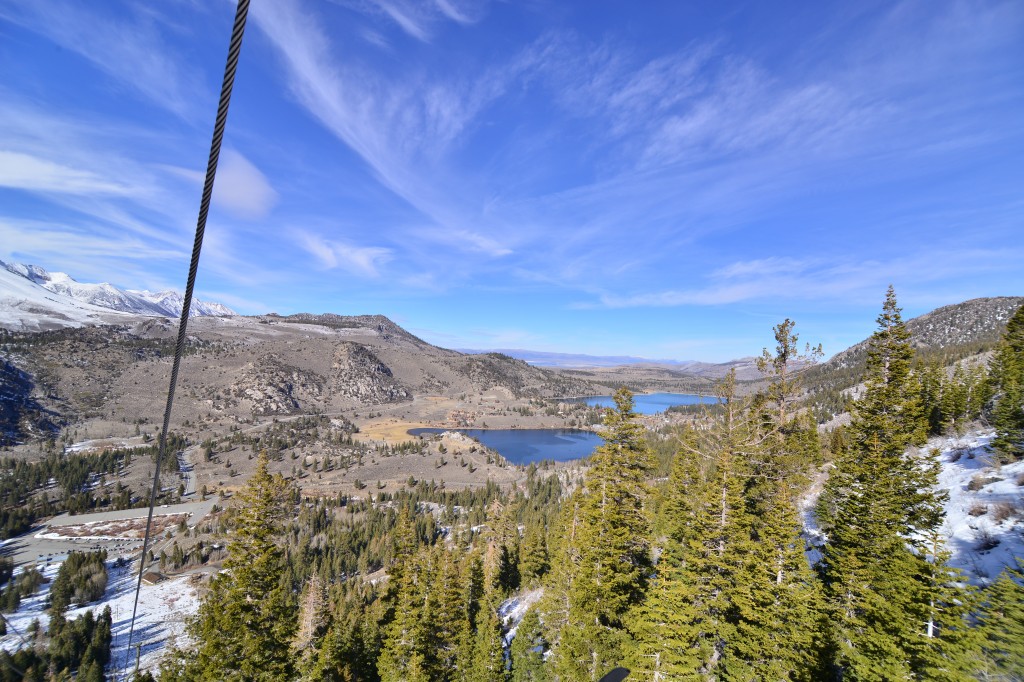 In June Lake, the town feel is much smaller with only about 629 year round residents, less than a tenth of the population of Mammoth Lakes spread out over about 9 square miles. 65% of the homes there are second homes and vacant.
In June Lake, the town feel is much smaller with only about 629 year round residents, less than a tenth of the population of Mammoth Lakes spread out over about 9 square miles. 65% of the homes there are second homes and vacant.
It is about a 20 minute drive north on the 395 Hwy from Mammoth Lakes and the town sits on the June Lake Loop. It receives about the same amount of snow and sunny days as Mammoth. Because the community is built on hills and meadows in this subalpine valley surrounded by high mountain peaks, it has been dubbed the “Switzerland of California.” The area is most famous for its trout fishing, which occurs in many modes: trolling or still fishing the lakes from a boat, float tubing, or shore fishing the many lakes and streams. Bait fishing is productive and popular, as are spin casting with lures and fly fishing. Rush Creek below the Grant Lake Dam is restricted to catch-and-release. The lakes are cool in temperature but swimming is possible in the midsummer months. There is a swimming beach on June Lake near the Oh! Ridge campground. Boat speeds are restricted on the smaller lakes but speedboats and personal watercraft are allowed on Grant Lake, making waterskiing and wakeboarding also possible. Hiking is a favorite pastime of the area: June Lake offers many trails that lead into the nearby back country of the Ansel Adams Wilderness.
June Lake is well known for its amazing Double Eagle Resort with a world class day spa and five star dining in the woods. You will not find much open past 10 pm in June Lake, except for possibly the Tiger Bar, the local watering hole. There are no public schools in the area and most children have to travel to Mammoth or Lee Vining for schooling for grades K-12.
June Mountain is open again after a year of being closed to the public. The area is being revitalized with the recent purchase of the rodeo grounds and the build out of a new luxury subdivision, The Highlands. Average home prices in the area are about 10% – 20% less than in Mammoth.
Most of the hikes, including Fern Lake, Reversed Peak, and Agnew Lake are strenuous and vertical, with the exception of the Parker Lake Trail which is a 2 mile hike that only climbs 400 feet in elevation. The Frontier Pack Train at Silver Lake offers equestrian day rides, as well as backcountry trips. Ample opportunities exist for mountaineering, climbing and bouldering activities, mountain or road bicycling, off-highway vehicle travel, photography, bird watching, and more. In Autumn, an abundance of Aspengroves change from green to gold and red hues as winter approaches. Winter brings snow and cold temperatures, but there are many sunny days during which skiing, snowboarding, ice climbing, ice skating, snowmobiling, sledding and snow play, cross country skiing, snowshoeing, and winter mountaineering and touring may be enjoyed.
History
The June Lake Loop has been attracting people such as fishermen, hunters, and hikers since the 19th century. Its first inhabitants were the Paiute Indians. Although there was abundant mining activity in adjacent areas, the prospectors of the late 19th century found little of interest here. The area remained road less, and was recognized only for its scenic and recreational value, including fishing. Then during the decline of the mining era, interest developed in the new technology of hydroelectrics.
The initial construction project continued through 1917, and during this time an employee named Roy Carson started the Loop’s first private resort, known as Carson’s Camp. During this period, automobile touring had become quite fashionable, and with the completion of Tioga Pass, June Lake became a popular destination and way point for those traveling between Yosemite and Southern California. Notably, many Los Angeles area dignitaries and Hollywood celebrities made their way here.
The Los Angeles Department of Water and Power since 1923 had been seeking to purchase water rights in the Mono Basin to increase the capabilities of their aqueduct system. And, by 1935, the Mono Basin Project was underway.
By the summer of 1940 the June Lake Fire District in conjunction with the United States Forest Service constructed the first municipal water system for the June Lake Village area.




